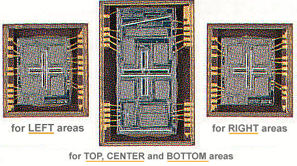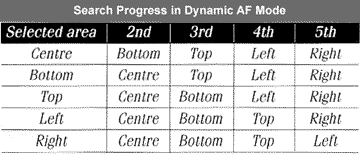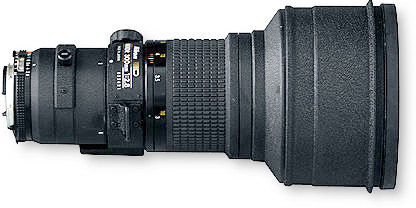The impressive autofocus performance of the Nikon F5 is made possible via a new generation of a Autofocus Sensor Module called Multi-Cam 1300 Autofocus Sensor Module (current Nikon F6 employs with an even more advance TTL Phase Detection Multi-Cam 2000 Autofocus Sensor Module). So, the development stage of Autofocus Module along with the film transport mechanism is equally interesting for the Nikon F-series as a whole. Below are the technical highlights and a few negative elements that surround the Nikon F5's autofocus functions:
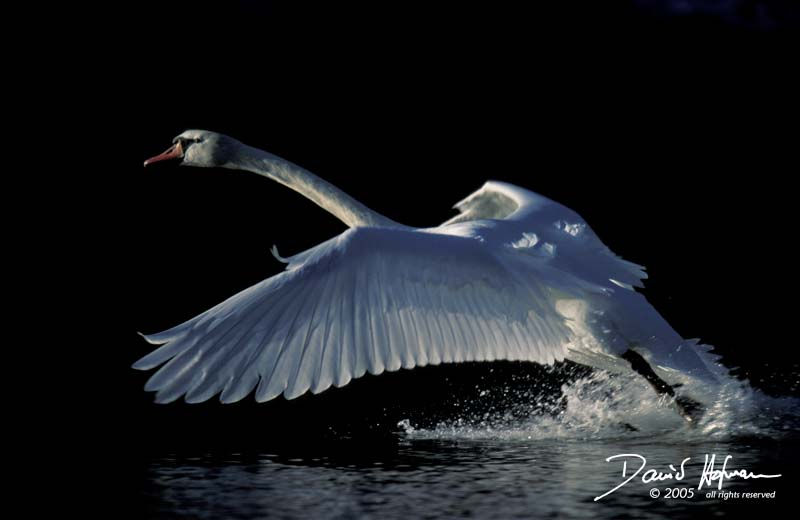 |
. |
The Swan Series by |
|
1) Multi-CAM 1300 Autofocus Sensor
Module The AF Sensor
Module used in the Nikon F5 is the same with the later stripped downed model, Nikon
F100's Multi-CAM 1300. The AF Module was a far improvement from earlier Nikon
F4's AM-200 AF Module.
The F5's module incorporates 5 (five) AF sensors that together create a large wide-cross
array covering the centre, left, right, top and bottom of the frame-a wider area
than that covered by any system before until the Canon introduced the 45 points multi-CMOS
sensor's Canon
EOS-3 in 1998
(The EOS-3 can limit down to 11 AF points with its custom setting #13 (?)). Detection
speed and accuracy are further enhanced for more responsive operation.
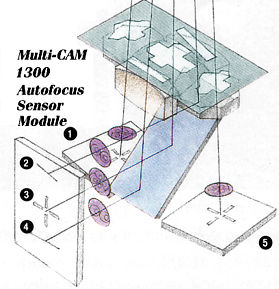 |
1) Cross-type CCD sensor for the focus area on the left hand side |
|
|
|
<<< --- Positions of AF Sensors in the viewfinder |
|
|
|
|
The first priority is on the user-selected area. If the first sensor (user-selected area) is out of focus, the second sensor is activated and continues through all five sensors, as needed. For subsequent detection, the focus search begins from the selected area, but the second area searched will be the area used in the previous search process. |
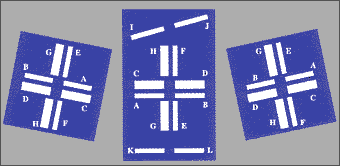 |
Layout of CCD elements |
2) Dynamic AF mode Select the priority focus area that suits your composition, and simply aim the selected focus area at the subject and shoot. If the subject moves, Dynamic AF also instantly shifts focus to another of the five areas, and follows the movement of the subject. This frees you from conventional dead centered shots such as the system provided in the Nikon F4. The system permits the photographer to have more varied composition. |
3) Single Area AF mode The Single Area AF mode is like having a choice among 5 carefully positioned AF spot sensors. The selected focus area is indicated on the top deck LCD and in the standard EC-B focusing screen. Inside the viewfinder a lit-up orange pointer also indicates the preferred choice of focus area. |
4) Choice of autofocus modes Nikon F5 has two basic autofocus modes: Single Servo AF with focus-priority and Continuous Servo AF with release-priority - very similar to the principle used in the earlier Nikon F4 and other supporting Nikon AF-SLRs in the product line except in their respective performance of individual models and the arrangement of the focus sensors. In the focus-priority Single Servo AF mode, the shutter will not operate until the focus detection system determines that focus is accurate at the time of exposure. In the release-priority Continuous Servo AF mode, the shutter will release anytime you press the shutter release button, this mode will fires the shutter regardless of focus detection status. In either autofocus mode, and in any film advance mode, Focus Tracking automatically activates when a moving subject is detected.
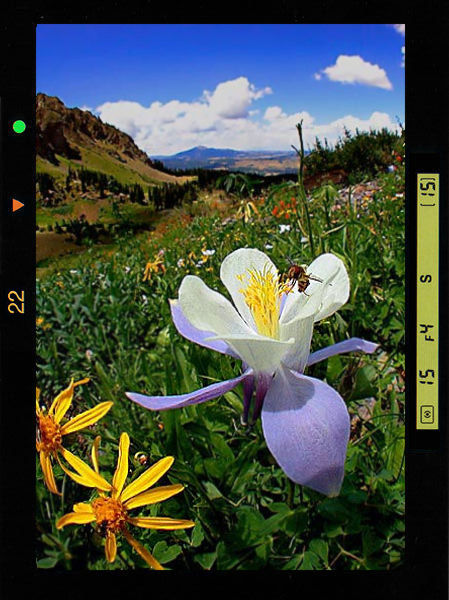 |
5) A good, wide EV AF working range The F5 operates throughout the range from EV - 1 to EV 19 (ISO 100). Please note in Spot Metering, the EV range is a less responsive EV2-EV20. |
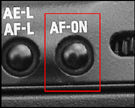 |
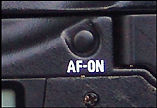 |
6) AF start buttons The AF start buttons are one of the key debating point for its practicality among many Nikon users. They are supposed to design to activate autofocus operation anytime you want to. One button handles horizontal, the other for vertical handling. The latter's location is highly questionable in its practicality.. |
The camera's Custom Setting #4
actually enables you to select shutter release button exclusively for shutter release
operation and the AF start button for AF activation. This makes for greater personal
control and enhances the versatility of automatic shooting as well. For example,
you can simply lock focus by removing your finger from the button in the Continuous
Servo AF mode. This feature is also perfect for action based photography and other
situations that require quick reaction because it allows the photographer to concentrate
solely on shutter release timing. However, in vertical format shooting, the AF Start,
although locates logically at a convenient place but the far reaching focus selector
on the camera back restrict easy maneuver which makes many picky users complained
all the time.
7) Electronic rangefinder in MANUAL focusing The benefits Nikon F5 take care
for the older MF-Nikkor optic in focusing is perhaps the focus aid. This feature
was inherited from the earlier Nikon F4, which is more versatile than optical range
finders, simplifies manual focusing when used with AF Nikkor or other excellent groups
of Ai-type Nikkor lenses with a maximum aperture o f/5.6 or faster.
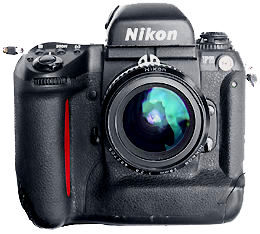 |
Less significant to see its worth for wide angles applications such as the MF Nikkor 28mm f/2.8s lense shown here, but may prove very helpful in long tele lenses such as this MF Nikkor 300mm f/2.8 ED-IF. |
 |
To operate: Arrows in the viewfinder indicate which direction to turn the lens focusing ring. The viewfinder's clear matte field also makes checking focus status easy. Perhaps good when using certain Manual Focus Ai-Nikkor telephoto or zoom lenses that has smaller maximum aperture. |
8) Focus Tracking with Lock-On
Precision Focus Tracking When the subject starts to move, Focus Tracking is automatically activated, regardless of the autofocus mode and AF area mode selected. In combination with the 5-areas, Wide-Cross Array autofocus sensor module, this computer-assisted system analyses the speed of the moving subject while driving the autofocus tens and anticipates the subject's movement. Thus, focus detection is possible regardless of the direction of the subject's movement at up to eight (8) frames per second (fps). Overlap servo method Unlike AF systems that use the stepped or intermittent Method in which focus is detected and the tens is driven alternately, the F5's autofocus system simultaneously detects focus and drives the lens. As a result, lens focus is constantly adjusted, even during lens driving, in accordance with the latest focus data, so the camera can track even subjects moving erratically for consistently sharp exposures, frame after frame.
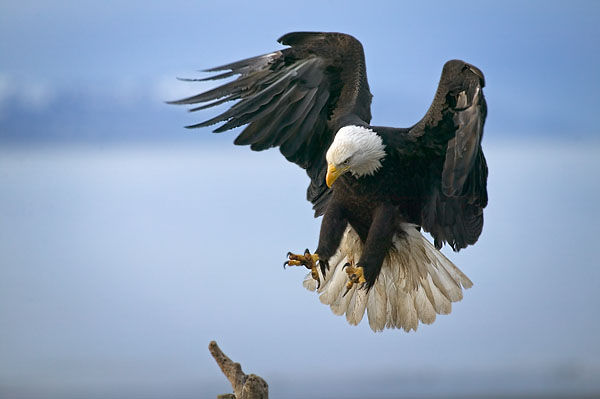 |
Shot faster moving Subjects Nikon claimed their studio performance tests demonstrate that the F5's AF system can focus-track on subjects moving faster* than other systems. |
* Prior to Canon's EOS-1v (2001)'s 10 fps film advance rate & 9 fps on AF-Tracking.
For example, using a 300mm lens with the F5's Precision Focus Tracking function, it is possible to focus on a subject, moving at 300kmi/h from a distance as close as 19.3
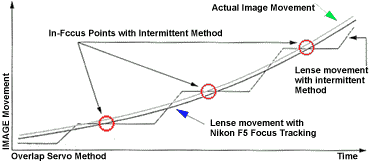 |
|
Release-Priority Operation The F5's AF operation is so fast and smooth that Focus Tracking can reliably operate with shutter-release-priority at framing speeds up to eight frames per second (8 fps). With other systems, the shutter is released for the first frame of a sequence whether or not autofocus operation is complete, often resulting in inconsistent focusing. The F5's continuous tracking feature is one feature what may consistently helping the photographer to achieve sharp focus. Note: EV working range that relates to hardware used, may indirectly affect the AF performance.
Supplement: Lock-On![]() Once the F5's Multi-CAM1300
sensor module detects a moving subject, the autofocus system activates Focus Tracking,
and locks on to the subject. Even if focus detection is momentarily interrupted by
something blocking the main subject in the viewfinder, Focus Tracking with Lock-On™
Will continue to track the original subject, keeping sharp focus for subsequent frames.
The same function takes over even if you accidentally move the focus area off the
subject for a moment even in Dynamic AF mode. This feature is great for sports or
nature photography where something could momentarily block the main subject. Both
the Focus Tracking and Lock-on feature are passive when activated along with photographer's
preferred of choice in the Dynamic AF mode and it lessen photographers extra moments
in making any adjustments in camera control to utilize these functions.
Once the F5's Multi-CAM1300
sensor module detects a moving subject, the autofocus system activates Focus Tracking,
and locks on to the subject. Even if focus detection is momentarily interrupted by
something blocking the main subject in the viewfinder, Focus Tracking with Lock-On™
Will continue to track the original subject, keeping sharp focus for subsequent frames.
The same function takes over even if you accidentally move the focus area off the
subject for a moment even in Dynamic AF mode. This feature is great for sports or
nature photography where something could momentarily block the main subject. Both
the Focus Tracking and Lock-on feature are passive when activated along with photographer's
preferred of choice in the Dynamic AF mode and it lessen photographers extra moments
in making any adjustments in camera control to utilize these functions.
9) Freeze Focus I remembered
this Nikon's exclusive feature was first introduced with Nikon F801s back in 1987/8
and the Nikon F4 also shares this function via the Multi-Control Back MF-23 as well as the 250 exp. Bulk Film Back MF-24 - this feature was a hit for many sports photographers.
This Nikon's unique feature is available with only via the Multi-Control Data Back,
in this case, the Nikon F5's optional Multi-Control Back MF-28 will provide this
feature. Used with all compatible Nikkor lenses and manual focusing, this feature
will automatically fire the shutter when a subject comes into focus. It is a very
useful feature for getting some of the previously deemed extremely difficult to acquire
shots for cerain active sports, wildlife photography or macrophotography especially
in situations that may require unmanned photography..
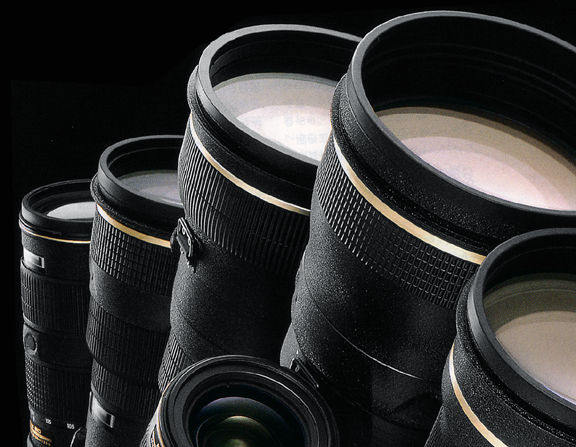 |
10) To optimize full potential of the Nikon F5's autofocus capabilities, a series of improved AF-S Nikkor Lenses |
| Nikon F | Nikon F2 | Nikon F3 | Nikon F4 | Nikon F5 | Nikon F6 | Nikkormat / Nikomat | Nikon FM | Nikon FE/ FA | Nikon EM/FG/FG20 | Nikon Digital SLRs | Nikon - Other models |
The Eyes of Nikon:-
Nikon Auto Focus Nikkor lenses:- Main
Index Page
Nikon Manual Focus Nikkor lenses:- Fisheye-Nikkor Lenses - Circular | Full Frame |
Ultrawides Lenses - 13mm15mm18mm20mm | Wideangle Lenses - 24mm28mm35mm | Standard Lenses - 45mm 50mm 58mm | Telephoto
Lenses - 85mm105mm135mm180mm & 200mm | Super-Telephoto Lenses - 300mm 400mm 500mm 600mm 800mm 1200mm |
 Index Page |
Special
Application lenses: Micro-Nikkor Lenses - 50mm~55mm -60mm 85mm -105mm 200mm Micro-Zoom 70-180mm Perspective Control (PC) - 28mm 35mm PC-Micro 85mm Dedicated Lenses for Nikon F3AF: AF 80mm f/2.8 | AF 200mm f/3.5 EDIF Depth of Field Control (DC): 105mm 135mm Medical Nikkor: 120mm 200mm Reflex-Nikkor Lenses - 500mm 1000mm 2000mm Others: Noct Nikkor | OP-Nikkor | UV Nikkor 55mm 105mm | Focusing Units | Bellows-Nikkor 105mm 135mm Nikon Series E Lenses: 28mm35mm50mm100mm135mm | E-Series Zoom lenses: 36~72mm75~150mm70~210mm |
MF Zoom-Nikkor Lenses: 25~50mm | 28~45mm | 28~50mm | 28~85mm | 35~70mm | 36~72mm E | 35~85mm | 35~105mm | 35~135mm | 35~200mm | 43~86mm | 50~135mm | 50~300mm | 70~210mm E | 75~150mm E | 80~200mm | 85~250mm | 100~300mm | 180~600mm | 200~400mm | 200~600mm | 360~1200mm | 1200~1700mm
Tele-Converters: TC-1 | TC-2 | TC-200 | TC-201 | TC-300 | TC-301 | TC-14 | TC-14A | TC-14B | TC-14C | TC-14E | TC-16 | TC-16A | TC-20E
The Silent-Wave-Motor-powered Nikkor lenses have a built-in motors that enables Nikkor telephotos be focus and handled faster than ever. the motor enabling the lenses to rotate quickly and stop at precisely for sharp focused images. They are quiet as compared to normal AF-Nikkor but not to the extend of truly "quiet" as Nikon claims they do. Usually, these series of Nikkor embody an Internal Focusing (IF) design, with the added advantage without lens barrel extension during focusing. The lens CPU provides data interface with the camera body electronically, as well as with the subject-to-camera Distance Information used for evaluating exposure metering. These series of AF-S optic usually incorporated with Extra-iow Dispersion (ED) glass and Integrated Coating (NIC) to improve their optical quality. The lenses also have a M/A mode enables quick switching between manual focus and autofocus - a feature heavily missed in the Pre-F5 generations). Additionally, AF-S Nikkor lenses have convenient AF Lock buttons and focus range limiters, too. The family of Nikkor lenses that carried with an "AF-S" designation are not large in numbers and/or selection, but I think eventually the system will grow - except that stupid fact that Nikon would prefer grouping some of them with the G-Series specifications, which makes them unable to be use with older Nikon bodies that do not carry with a Main-Sub Command Dials. Note: depends on models, you MAY still be able to use selective of these AF-S lenses in Manual, Aperture Priority AE in Center-Weighted metering. However, in most cases, no exposure data will be given to the photographer inside the viewfinder exposure display (I still couldn't repeat it as a stupid, stupid ...commercial decisions by Nikon !) MORE...relating to this topic.
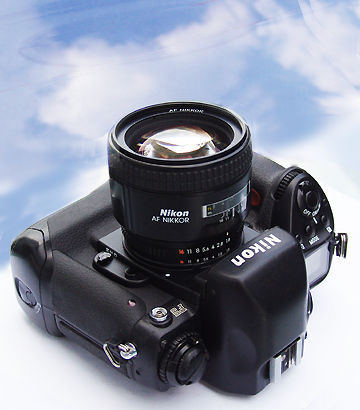 |
Don't get me wrong, the above discussion is only confined to super-tele class of Nikkors. The Nikon F5 can also deliver equal fast AF performance with ALL the optics in the ever-growing AF-D Nikkor lens family (many are slowing being upgraded with an AF-S spec -where Nikon claims they should works smoother, if not faster). As the Nikkor (AF & MF) may have been carried with different specifications & configurations, so when used with F5, such variable factors may result in different degree of AF performance as well as in their respective metering capabilities. You can refer to the chart on the lense compatibility section for more information where it relates. But I would like to influence any buying decision as I have emphasized many times in this site, photography is not entirely confined to AF-speed alone but autofocusing does has its absolute advantage in many scopes of applications. |
11) Autofocus with AF Illuminator when the brightness of available light is insufficient for autofocus operation, it is recommended that you use a Nikon autofocus Speedlight (SB-28, 26, 27, 25, 23, or 22 or other equivalents). Many of these Nikon Speedlights has the feature of automatically emit an LED pattern of light onto the subject, enabling the camera to focus even in total darkness. To do this, first set the camera's AF mode to "S" (single servo) to activate the AF illuminator, then select the centre focus area. |
As the flash section involve many other issues, you should read more at the Nikon Flash Photography section where it outlines many of their improved capabilities when a Nikon F5 is used in such combination. I have updated info for many of the Nikon AF-Speedlights since all the featured flash group units usable with the Nikon F4.
| previous | 2/2 | NEXT | - Various Metering capabilities
 |
The Camera - Background, Issues & Summary |
Resource
Centre: Instruction
Manuals
Nikon
F5 Camera Body
- 18
parts
MF-28
Multi-Function Back
HTML - 8
parts
PC
Links - Photo Secretary
- 2
parts
AF-TTL Speedlights:
SB-28 / SB28DX | SB29(s) info | SB30 | SB50DX | SB80DX | SB600 info | SB800
Variants: F5 50th Anniversary Model | Nikon/Kodak DCS-620 | DCS-720 Digital Still SLR camera | NASA-modified Nikon F5
|
Back | Index Page of Digital
Nikon SLR cameras
|
Back | Main Index Page of Pictorial
History of Nikon SLR cameras
![]()
| Nikon F | Nikon F2 | Nikon F3 | Nikon F4 | Nikon F5 | Nikon F6 | Nikkormat / Nikomat | Nikon FM | Nikon FE/ FA | Nikon EM/FG/FG20 | Nikon Digital SLRs | Nikon - Other models |
The Eyes of Nikon:-
Nikon Auto Focus Nikkor lenses:- Main
Index Page
Nikon Manual Focus Nikkor lenses:- Fisheye-Nikkor Lenses - Circular | Full Frame |
Ultrawides Lenses - 13mm15mm18mm20mm | Wideangle Lenses - 24mm28mm35mm | Standard Lenses - 45mm 50mm 58mm | Telephoto
Lenses - 85mm105mm135mm180mm & 200mm | Super-Telephoto Lenses - 300mm 400mm 500mm 600mm 800mm 1200mm |
 Index Page |
Special
Application lenses: Micro-Nikkor Lenses - 50mm~55mm -60mm 85mm -105mm 200mm Micro-Zoom 70-180mm Perspective Control (PC) - 28mm 35mm PC-Micro 85mm Dedicated Lenses for Nikon F3AF: AF 80mm f/2.8 | AF 200mm f/3.5 EDIF Depth of Field Control (DC): 105mm 135mm Medical Nikkor: 120mm 200mm Reflex-Nikkor Lenses - 500mm 1000mm 2000mm Others: Noct Nikkor | OP-Nikkor | UV Nikkor 55mm 105mm | Focusing Units | Bellows-Nikkor 105mm 135mm Nikon Series E Lenses: 28mm35mm50mm100mm135mm | E-Series Zoom lenses: 36~72mm75~150mm70~210mm |
MF Zoom-Nikkor Lenses: 25~50mm | 28~45mm | 28~50mm | 28~85mm | 35~70mm | 36~72mm E | 35~85mm | 35~105mm | 35~135mm | 35~200mm | 43~86mm | 50~135mm | 50~300mm | 70~210mm E | 75~150mm E | 80~200mm | 85~250mm | 100~300mm | 180~600mm | 200~400mm | 200~600mm | 360~1200mm | 1200~1700mm
Tele-Converters: TC-1 | TC-2 | TC-200 | TC-201 | TC-300 | TC-301 | TC-14 | TC-14A | TC-14B | TC-14C | TC-14E | TC-16 | TC-16A | TC-20E
Recommended links to understand more technical details
related to the Nikkor F-mount and production Serial Number:
http://rick_oleson.tripod.com/index-153.html by: my
friend, Rick Oleson
http://www.zi.ku.dk/personal/lhhansen/photo/fmount.htm by: Hansen,
Lars Holst
http://www.mir.com.my/rb/photography/hardwares/nikonfmount/lens2.htm
http://www.photosynthesis.co.nz/nikon/serialno.html
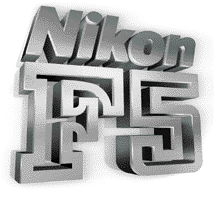 |
| Message Board | for Nikon F5 Series SLR model(s) | |
About this photographic site.
HOME - Photography in Malaysia |
![]()
A resource dedicated to my kids, Alvin Foo & Esther Foo- one day,
BOTH might need to use all these information for his/her Nikon F5A camera.
Volunteered Maintainer(s) for the Nikon F5 Message Board: Tony Davies-Patrick, UK; Rick Oleson, US; Koh Kho King, Malaysia.
Credit: Mr. Chuck Hester, US for his text re-editing skill for this site; Our staff, HowKiat® who created the 3D-Nikon F5 logo. Mr. Lew Chee Wai of YL camera for lending his F5 for me to take some shots appeared in this site. All those nice folks who have contributed their images, in particular Mr. Mike Long, Edwin leong, Palmi Einarsson, Sergio Pessolano, Fred Kamphues, Harry Eggens, Curtis Forrester, Nick (Natures Moments), Sandra Bartocha; fellow countrymen, Vincent Thian, Koh Kho King, Philip Chong, CY Leow etc. and contributions from a few nice folks from Photo Malaysia Forum. Disclaimers & acknowledgments: Certain content and images appeared in this site were either scanned from official marketing leaflets, brochures published by Nikon and/or contribution from surfers who claimed originality of their own work for public publishing in this website, where majority of the extracted information are used basing on educational merits. The creator of this site will not be responsible for any discrepancies that may arise from any possible dispute except rectifying them after verification from respective source. Neither Nikon or its associates has granted any permission(s) in using their public information nor has any interest in the creation of this site. "Nikon", "Nikkormat", "Nippon Kokagu KK" "Silent Wave", "Focus Tracking Lock-on", "Nikkor" & other applicable technical/business terms are registered trade name(s) of Nikon Corporation Inc., Japan. Site made with an Apple G5 IMac.
